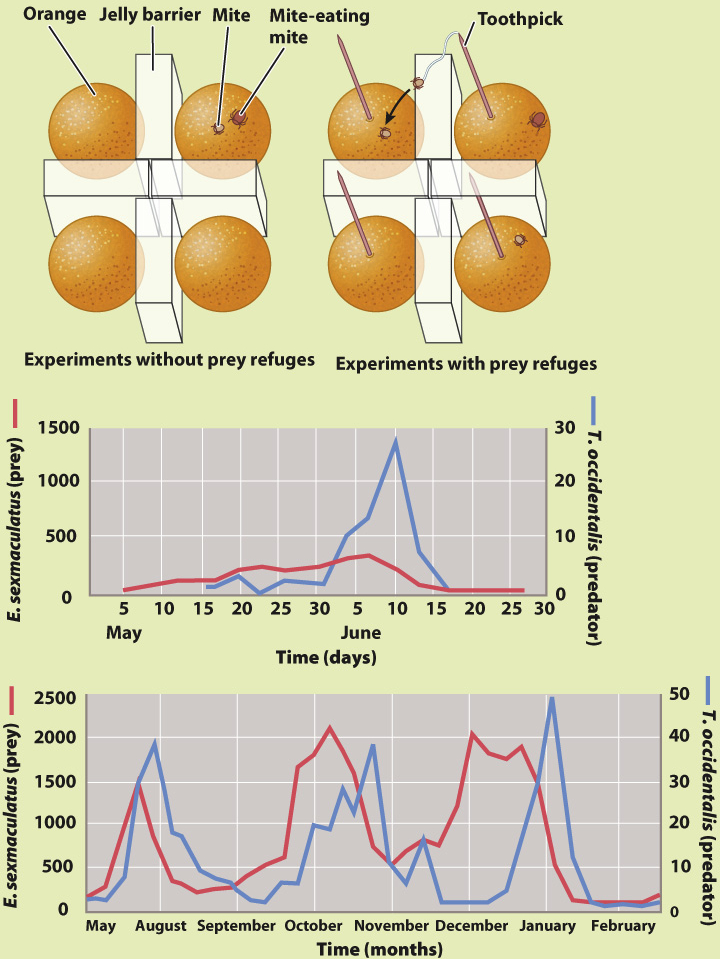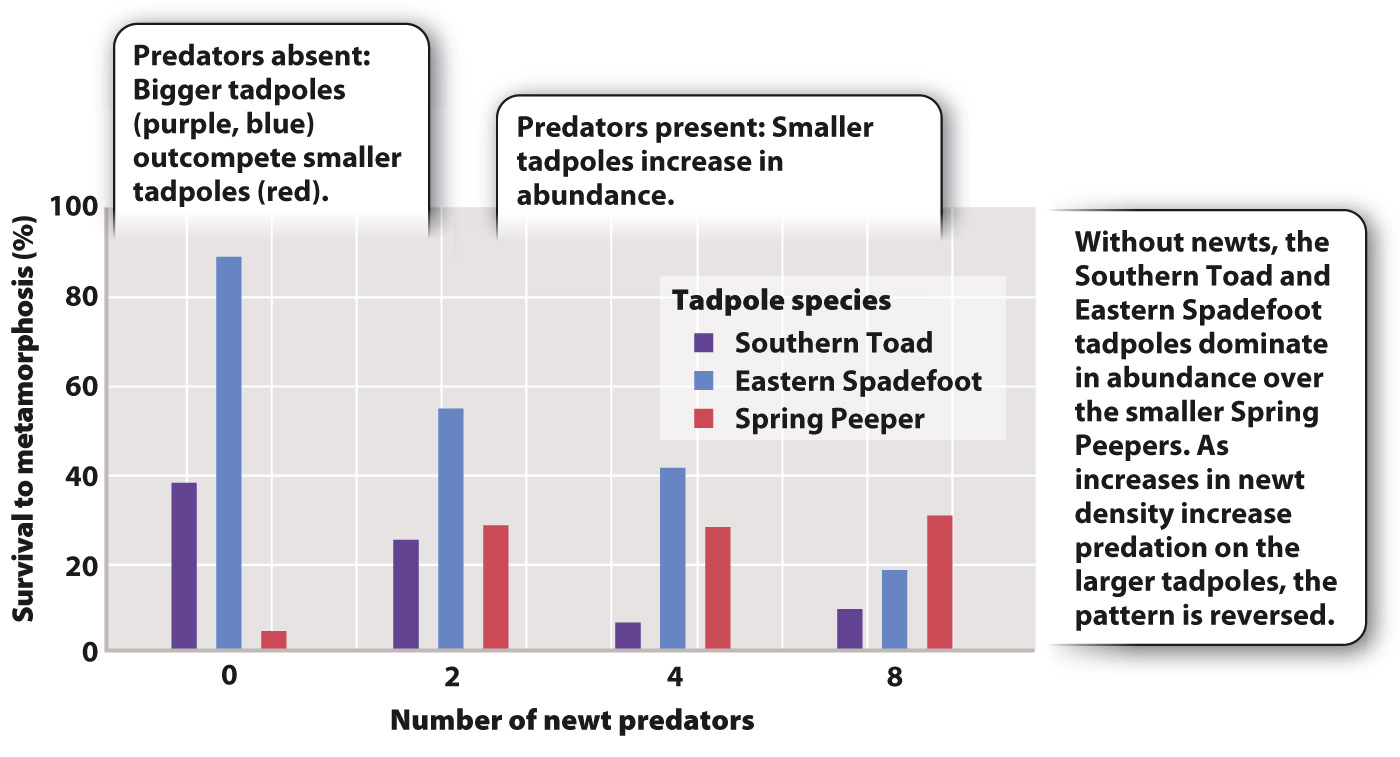Predation, parasitism, and herbivory are interactions in which one species benefits at the expense of another.
In contrast to competition, some interactions benefit one participant and harm the other. Predation is a type of interaction in which one organism consumes another, its prey (Case 7: Predator–Prey). In this interaction, the predator benefits at the expense of the prey. Early experiments by the Russian biologist Georgii Gause showed that a simple system with one predator and one prey population is inherently unstable. The predator overexploits the prey, driving it to extinction, and then becomes extinct itself.
In 1958, the American scientist Carl Huffaker demonstrated that if the prey had refuges where some individuals could escape from predators, they could persist while predator populations declined. Through time, the prey population would recover and population density would rise to a point where predators would again expand and cause prey abundance to decline—
HOW DO WE KNOW?
FIG. 47.6
Can predators and prey coexist stably in certain environments?
BACKGROUND In the 1950s, it was not clear whether a simple system of predators and prey could be stable and coexist indefinitely or whether both groups of species would become extinct as predators consumed all available prey. The results of experiments up to that time were equivocal, and ecologists knew that predators introduced to islands could hunt their prey to extinction.
HYPOTHESIS Ecologist Carl Huffaker hypothesized that predators and prey could stably coexist if temporary refuges were available for the prey.
EXPERIMENT Huffaker studied two kinds of mites: one that feeds on the surface of oranges, and another that preys on the orange-

RESULTS In the setup in which prey could not escape, a single cycle of increase and decline was observed: The population size of prey increased but was closely tracked by rising populations of their predators, and eventually both declined to extinction.
In experiments in which toothpicks were provided, the orange-
CONCLUSION Predator–
SOURCE Information from Huffaker, C. B. 1958. “Experimental Studies on Predation: Dispersion Factors and Predator–
Predators can limit the population sizes of their prey, preventing prey populations from increasing to the level where competitive exclusion occurs. We have seen that when species overlap in resource use and their populations increase to the point where they compete for resources, they must be separated in space or time or risk local extinction through competitive exclusion when resources become limited.
If, however, populations do not rise to densities at which resources are limiting, competition is reduced and species can overlap in niches without excluding one another. For example, in ponds throughout the southern United States, tadpoles of the large Southern Toad, the Eastern Spadefoot, and the tiny Spring Peeper all use the same food source, grazing on algae as do other tadpoles. In the presence of the two larger species, Spring Peeper tadpoles compete poorly for food (Fig. 47.7). As a result, they have low survival rates, and those individuals that do make it to maturity are often undersized because as tadpoles they did not have access to adequate nutrition.

In the presence of a predatory Red-
Parasites live in close association with another species, gaining nutrition by consuming their hosts’ tissues. Unlike predators, parasites commonly do not kill their hosts, but they can reduce host fitness by tapping its resources. In this way, parasites can limit the population size of their host, keeping numbers well below the carrying capacity of the environment.
An extreme example is the fungus that infects the American chestnut, a tree once dominant in eastern North American forests. The fungus attacks the vascular system of young chestnut trees, which usually succumb when they reach 2 to 3 m in height. Today, there are only a few isolated patches of large chestnut trees in Vermont and a handful of other places that have escaped the fungus. As chestnut populations have declined, populations of oak, beech, and other trees that grow in the same forest have increased.
Herbivory, the consumption of plant parts, benefits herbivorous animals by providing some nutrients, and harms plants by directly affecting the products of photosynthesis. Plants are generally not as nutritious for animals as other animals are, and so herbivorous animals must eat more plant material to obtain the nutrients they need for survival and reproduction. As we saw in Chapter 32, plants are not passive victims of herbivores; most are well defended with chemical or physical deterrents to herbivory.